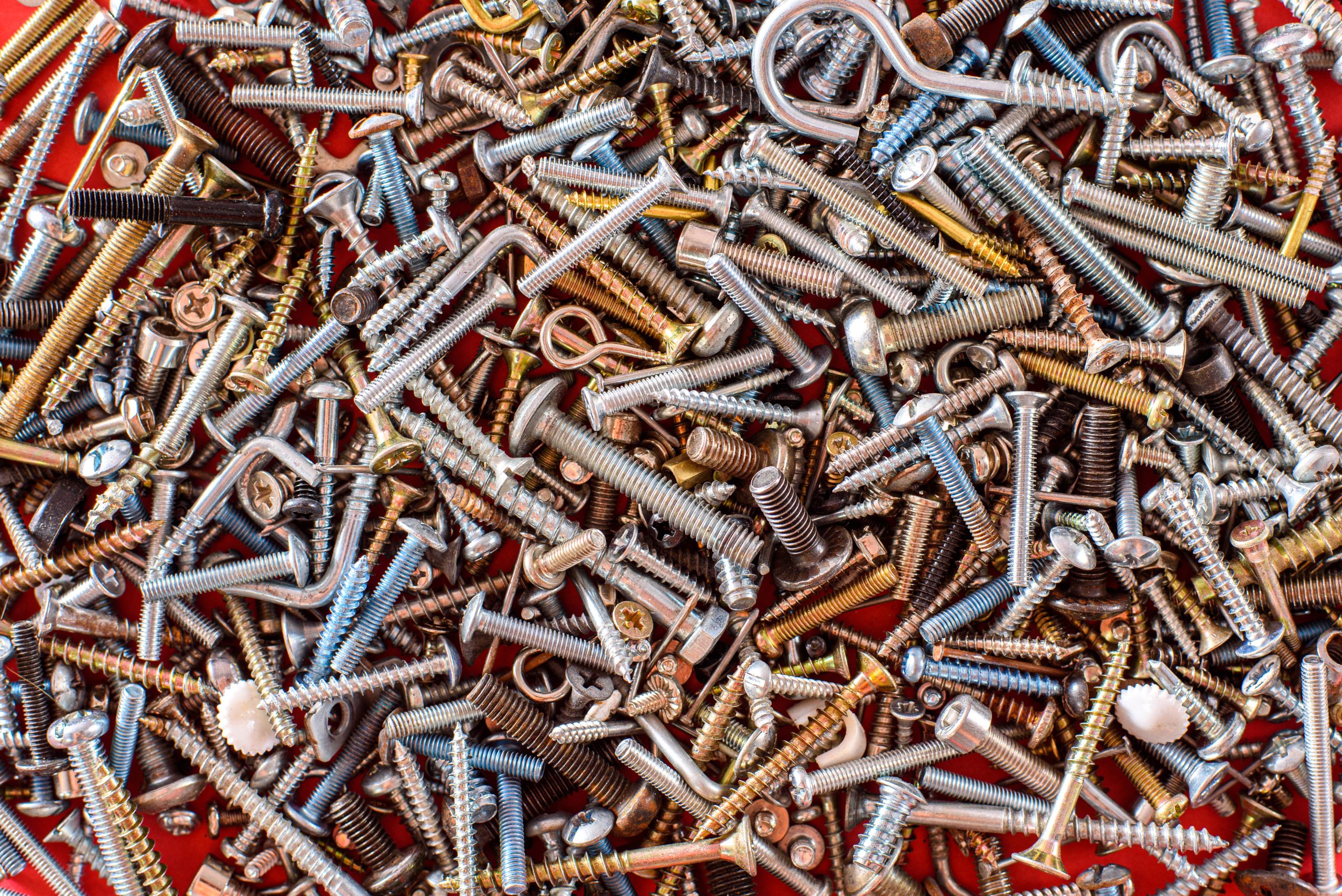
 The short answer is “yes.” There are dozens of different types of screws designed for a wide range of uses materials. Screws can be defined by four basic parameters: driving method, head shape, thread type, and material. Let’s briefly discuss each one:
The short answer is “yes.” There are dozens of different types of screws designed for a wide range of uses materials. Screws can be defined by four basic parameters: driving method, head shape, thread type, and material. Let’s briefly discuss each one:
Driving method
Screw driving methods refer to the combination of head type and tool that enable a screw to be secured into or through a particular material or product.
Slotted
This is by far the most popular and perhaps the oldest type of screw type in the world, sporting a basic linear slot in the head that’s driven with a standard slot, or flat-head, screwdriver.
Phillips
Designed as a slightly more aggressive screw type, the Phillips head features an x-shaped groove that does not extend all the way across the screw head, enabling the driver to mate more securely with the screw and not slip sideways out of the groove as a slotted screwdriver can. However, a variation of the Phillips head with the x-groove extending all the way through the screw head edges provides the flexibility of using both a standard slot screwdriver or a Phillips screwdriver.
Hex
Actually TWO types of screws – a hexagonal recession version called a hex socket or Allen screw as well as one with a hexagonal-shaped head – hex screws require either an Allen wrench that fits into the hex-shaped socket or a socket wrench that fits over the entire hex-shaped head.
Square
This screw features a square indentation to reduce slippage and requires a special driver. This screw type is also called a Robertson screw.
One-way
These tamper-resistant screws require a special driver to remove them. They can be installed with a standard slot screwdriver.
Torx
Similar to the hex socket screw, the torx features a six-pointed, star-shaped socket that requires a special driver that’s not commonly found, making this screw type relatively tamper-resistant.
These are the most common driving methods – there are dozens of less-known, specialty screw head-and-driver combos designed for specific needs.
Head shape
While there are a wide range of head shapes the most common are pan, button, round, flat, oval, truss, and fillister.
Thread variety
Just as with the various head styles and drivers, screw threads come in variety of thicknesses, counts, and depths depending on the use.
- Wood screw threads are generally deep and coarse to bite and grab wood well.
- Machine screw threads are finer and designed to be used with a nut or tapped hole (machined with reverse thread to mate with the screw).
- Sheet metal screw threads are manufactured with coarse threads to hold better in thin sheet metal.
- Self-tapping screw threads are designed to create their own tapped holes in softer materials such as plastic and wood.
- High/low screw threads are designed to better grab low-density materials such as some plastics, using two sets of alternating height threads.
Materials
When you talk about screw materials, you’re really talking about two things: the metal or alloy used to make the screw such as aluminum, steel, nylon, or brass; and the material used to finish it for aesthetics and/or function, such as a non-stick coating (e.g., Teflon®), black oxide, or zinc plating.


